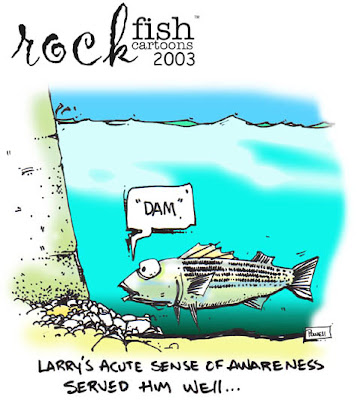 |
| The Hoover Dam being built in the 1930s (Credit) |
The Golden Age of dam construction in the United States came to a grinding halt in the 1980s, and developing nations picked up the torch and continue carrying it today. Irrigation, hydropower, flood control, and water supply dominate the list of dam purposes, creating large impoundments that inundate vast areas of land.
 |
| More than 80,000 dams in the US (Credit) |
Fish folk are often made acutely aware of the ecological impacts of dams on fish migration and habitat fragmentation, yet social impacts to humans have been mostly overlooked or disregarded until recently. With increasing global awareness of the social costs of large dam projects, the World Commission on Dams was formed in 1998, and subsequently published the first systematic assessment of large dams from around the world.
According to the report, some of the most challenging socioeconomic aspects of dam construction relate to the resettlement of individuals from the upstream catchment area and dam site. People are often displaced through coercion, force, or even by purposeful filling of reservoirs prior to the departure of those who are to be displaced. Resettlers seldom see their living conditions improve, and often slip further into poverty. Further, those downstream, especially those relying on natural flood plain function and fisheries, are often affected by reduced flows and are almost never compensated for their loss.
 |
| More than one million people displaced by the Three Gorges Dam, China (Credit) |
Case studies from The World Commission on Dams demonstrate that a disproportionate amount of the adverse impacts caused by dams fall on poor and rural populations, subsistence farmers, indigenous peoples, ethnic minorities, and women. These groups, especially in developing countries, are underrepresented in politics, and seldom have equal human rights.
In the limited number of cases seen as successes, fewer instances of injustice and better resettlement outcomes were the result of the affected people and the stakeholders directly negotiating compensation packages. While compensation is not always seen as the most effective or appropriate option, people tended to feel more satisfied for having engaged in negotiations. Additionally, a positive outcome required full engagement of political, institutional, and community groups. So, next time I hear someone ask me the joke about the fish bumping its head, maybe I will not only be thinking of the fish. Would it be terrible if I were “that guy”, and answered their joke with: “Damn this disproportionately socially impacting pile of cement.” Leave a comment below telling us what would be fair compensation to make you leave your house and land so that a dam could be built.
Patrick Cooney
Further Reading: Human Rights in the Three Gorges Dam Resettlement World Commision on Dams Report
Further Reading: Human Rights in the Three Gorges Dam Resettlement World Commision on Dams Report

No comments:
Post a Comment
Give me your thoughts, and please remember to be kind to one another!